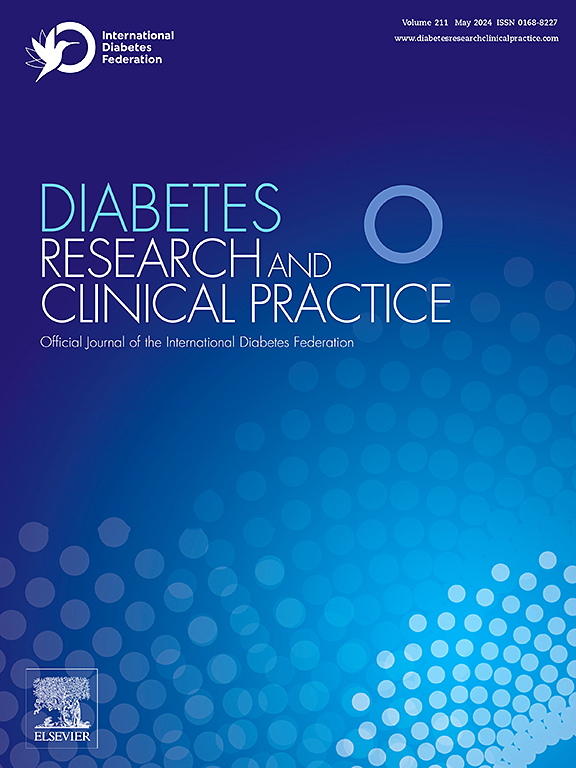糖尿病对主要下肢截肢后长期死亡率的影响:威尔士一项基于人群的队列研究
IF 6.1
3区 医学
Q1 ENDOCRINOLOGY & METABOLISM
引用次数: 0
摘要
背景:下肢截肢与高发病率和死亡率相关,尤其是糖尿病患者。以前的研究表明,威尔士的死亡率各不相同,但没有人调查过糖尿病对威尔士的影响。方法采用安全匿名信息关联数据库中的匿名数据进行人群队列研究。2006年至2013年威尔士≥18岁的所有重大截肢事件的生存率通过5年随访进行评估。Kaplan-Meier生存曲线和Cox回归模型,按截肢水平分层,在校正混杂因素的同时,检验糖尿病对死亡率的时间依赖性影响。结果大截肢2542例,糖尿病患者48.4%。30天死亡率为9.2%,5年内死亡率为61.9%。糖尿病患者的5年死亡率(67.0%)高于非糖尿病患者(57.1%)。糖尿病与长期死亡风险增加相关(危险比1.62,p <;0.001),但在截肢后的前30天内死亡风险降低。周围血管疾病史和膝上截肢是死亡率的重要预测因素。结论时间分层分析显示,糖尿病患者截肢术后短期死亡率较低,但长期死亡率较高。需要进一步的研究来探索旨在提高生存率的干预措施。本文章由计算机程序翻译,如有差异,请以英文原文为准。
Impact of diabetes on long-term mortality following major lower limb amputation: A population-based cohort study in Wales
Background
Major lower limb amputation is associated with high morbidity and mortality, particularly among patients with diabetes. Previous studies suggest variable mortality rates, but none have investigated the impact of diabetes in Wales.
Methods
A population-based cohort study was conducted using anonymised data from the Secure Anonymised Information Linkage Databank. Survival from all incident major amputations in persons ≥ 18 years from 2006 to 2013 in Wales was assessed over 5-year follow-up. Kaplan-Meier survival curves and Cox regression models, stratified by amputation level, were used to examine the time-dependent effect of diabetes on mortality while adjusting for confounding factors.
Results
2542 individuals underwent major amputation, 48.4 % had diabetes. Mortality at 30 days was 9.2 % and 61.9 % within 5 years. Patients with diabetes had higher 5-year mortality (67.0 %) compared to those without diabetes (57.1 %). Diabetes was associated with an increased risk of long-term mortality (hazard ratio 1.62, p < 0.001), but a reduced risk of death in the first 30 days post-amputation. A history of peripheral vascular disease and above-knee amputation were strong predictors of mortality.
Conclusion
Time-stratified analysis demonstrates lower short-term but higher long-term mortality risk for persons with diabetes following major amputation. Further research is required to explore interventions aimed at improving survival.
求助全文
通过发布文献求助,成功后即可免费获取论文全文。
去求助
来源期刊

Diabetes research and clinical practice
医学-内分泌学与代谢
CiteScore
10.30
自引率
3.90%
发文量
862
审稿时长
32 days
期刊介绍:
Diabetes Research and Clinical Practice is an international journal for health-care providers and clinically oriented researchers that publishes high-quality original research articles and expert reviews in diabetes and related areas. The role of the journal is to provide a venue for dissemination of knowledge and discussion of topics related to diabetes clinical research and patient care. Topics of focus include translational science, genetics, immunology, nutrition, psychosocial research, epidemiology, prevention, socio-economic research, complications, new treatments, technologies and therapy.
 求助内容:
求助内容: 应助结果提醒方式:
应助结果提醒方式:


